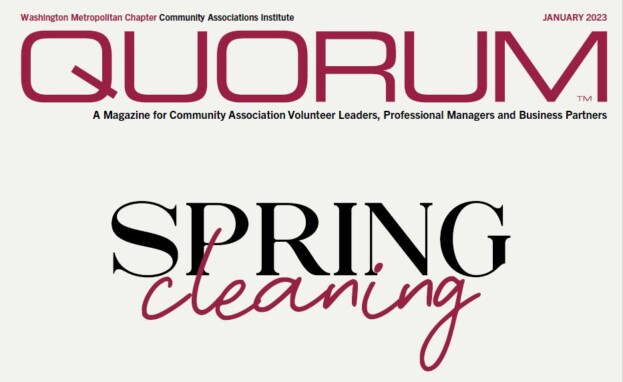This article originally appeared in the January 2023 edition of Quorum.
Renowned tidying expert Marie Kondo famously said that if something does not spark joy, dispose of it. What she failed to mention, however, is not to toss it in your community’s common areas or improperly store it in your yard.
So, what can your association do when people dispose of their things in all the wrong ways? Imagine: a broken fridge stored on its side in a neighbor’s backyard, a rusty onewheeled bicycle in the wooded area behind the cul-de-sac, or a beat-up suitcase filled with random knickknacks (pans, clothes, hangers, books, and a single, lonely deserted shoe) thrown on the sidewalk.
Most governing documents include a general requirement that residents maintain their property in “good order, condition, and repair, and in a clean and sanitary condition,” and/or free of debris, and that they not “commit waste” on shared areas. Some documents also go so far as granting the association the right to enter a property to abate a violation and assess the cost back to the owner.
Here are a couple of common situations you may (or already) face:
Residents discard their items in their own backyards or front lawns. Here, the association may send the resident a cease and desist notice citing the relevant maintenance standard and demanding the removal of the item within a specified amount of time, typically no less than fifteen days. If the discarded item is still not removed after exhausting the due process procedure under the association’s governing documents or applicable law, then the association may impose sanctions, including daily fines, until the item is finally removed.
If all else fails and the association’s governing documents permit doing so, then the association may also exercise its right to enter the property and remove the item. We typically recommend this option as a last resort, both for legal and practical reasons. Since it involves entering a person’s property and removing their personal item, many owners may object to the entry.
If that happens, then the association would need to get a court order before proceeding, resulting in additional expenses. Even if the association could gain unchallenged entry and remove the item, it may then face difficulty collecting the amounts owed. For these reasons, the recommended first step is to exhaust all other available options before resorting to entering and abating the violation.
Items discarded on common areas. Examples of this include the knickknack-filled suitcase left on the sidewalk, or the rusty onewheeled bicycle abandoned in the wooded area behind the cul-desac. In these cases, the association may proceed with enforcement action against the owner, if known, after following the required due process procedures. If the owner is unknown, then the association may notify the community that it will remove the items and store them for a period before permanently discarding them if their owner does not claim them within that timeframe.
Read the full article in the January 2023 edition of Quorum
Nura Rafati is a community associations attorney at Lerch, Early & Brewer. For more information, contact her at 301-657-0730 or [email protected]


